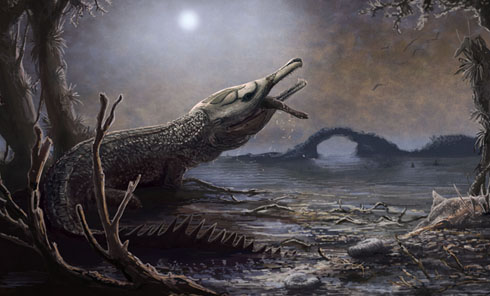Sea Change

The ancient relatives of crocodiles were a strange and diverse bunch. Mark Young and colleagues say their move from land to sea should be seen as one of the major evolutionary transitions in the fossil record. Illustrations by Mark Witton
The Biologist 65(5) p12-15
Most people see crocodilians (crocodiles, alligators, caimans and gharials) as fearsome, large-bodied predators that have remained unchanged since the age of the dinosaurs. However, considering them to be ‘living fossils’ greatly underestimates their previous diversity.
During their 230-million-year history, crocodilians and their extinct relatives evolved an astonishing diversity of body plans, including hoofed terrestrial species that evolved after the extinction of the dinosaurs, herbivorous and omnivorous species with mammal-like teeth and complex jaw motions, and others that ventured out into the open oceans and evolved into dolphin-like forms.
Want to continue reading this article?
Click to login.


